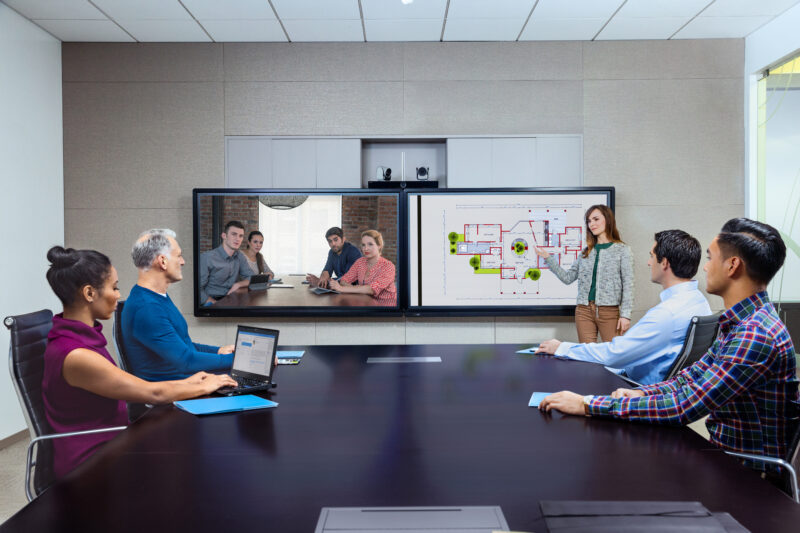How to Future-Proof Your Hybrid Workforce

The hybrid workforce and remote workers are not a new phenomenon. Although the recent pandemic caused an explosion in remote workers, the numbers have been steadily growing since the 90s. The pandemic forced many organisations that had previously opposed working away from the office to adopt it out of necessity.
When they did, they found that the reasons they were opposing it were unfounded. Not only were remote workers getting the job done, but often they were more efficient than their in-office counterparts. Business owners now understand that workers can work from anywhere, and it’s opened up a whole new market for them. One where they can delve into a large pool of talent while saving company resources. This has become known as 'hybrid work'.
At the same time, employees have concluded that working remotely increases their quality of life and improves their stress levels and mental health. In turn, it has increased their expectations for a better work/life balance that includes flexibility and more time at home.
More than half of employees now say that the ability to work flexibly will affect their decision to stay at an organisation. Over 70 percent indicate they won’t even take on a job that doesn’t allow hybrid work.
This isn’t a post-pandemic fad. Remote and hybrid work from home is here to stay. People aren’t building their social lives around their rigid work schedules anymore. Life comes first now, and work fits into it. The likes of Google, Twitter and Microsoft have told their staff that the five-day work week is over.
Times have changed. Work isn’t defined by an office block or a building that you have to go to five days a week anymore.

Post Contents [hide]
Hybrid Work is Here to Stay
Monitoring employees every minute of the day doesn’t mean their productivity will improve. Trusted workers perform better, and moving them out of the 9-5 box to a remote or a hybrid way of working increases their productivity and saves companies sizeable amounts of money.
In fact, in June 2021, it was reported that downsizing or eliminating a business's bricks and mortar presence after moving staff to remote working could add savings of up to $11,000 per employee. That alone is enough to make any corporate boss rethink their remote working objections.
A remote workforce also allows companies to hire based on matched skills rather than employing the best of a handful of people that turn up to an interview. If you have the right technology and processes, it’s possible to hire someone with the right skillsets, regardless of which city - or country they live in.
A Hybrid workforce also creates a safer working environment. No more overcrowded, noisy offices.
According to Microsoft’s 2021 Work Index, 73% of employees say they want a hybrid workspace and 62% of employees worldwide aged between 22 and 65 report working remotely at least occasionally - and for a higher income than regular workers.
Hybrid work is here to stay.

Talented Workers Want to Work From Anywhere
Life is busy. Despite all the advances in technology (that were supposed to make our lives easier), it appears there’s still never enough time to get things done.
This can make some full-time workers feel like they’re chained to their job, which doesn’t bring the best out of them.
Working for eight hours a day, five days a week, while waiting for the clock to run down, just so you can pick up the kids, make dinner, put on a load of washing, do the dishes and then go to bed doesn’t bring out the best in many staff members, and it can make some feel like they’re chained to their job.
Talented workers don’t want to do that anymore and prefer to work from anywhere and get the most done in their peak productive times. Workers achieving a better work/life balance and who are more productive as a result will always want to keep doing it.
Businesses will be left behind if they’re not preparing themselves to hire talented employees who want to work from anywhere. According to one study, the massive generational shifts that are coming by 2025 are going to force 75% of organisations to adopt new hybrid workforce strategies.

Bridge the Gap Between Remote and On-Site Employees
Hybrid workers don’t have to trade-off between co-worker connection and flexibility - It is possible for them to achieve both.
Unlike full remote workers who often feel isolated, hybrid workers can still attend meetings and functions regularly which means they’ll still get to create a rapport with their team and take part in face-to-face communications. When Hybrid workers can see their colleagues in person or come into the office for a chosen amount of time per week, it helps them feel like they’re part of the team, and they don’t report the same isolation issues.
Reddit, Twitter, and Microsoft have all adopted a hybrid workforce model that was initially experimental. They soon realised they had reduced their operational costs and improved work quality by implementing it, so it’s no surprise they kept it.
A hybrid workforce model can bridge the gap between on-site and remote workers by giving staff the added flexibility of dividing their time between the home and the office—this suits both employers and employees.

How to Create a Winning Hybrid Workplace Culture
Hiring Hybrid workers or moving staff to hybrid working can present some challenges for a business. It takes a shift in mindset and needs access to the right technology. It would be detrimental to move part of a workforce to a hybrid model and, in the process, create a divisive and inefficient culture because of workplace inequality.
Creating a winning hybrid culture requires planning and preparation. Here are a few places to start:
Encourage Connection and Collaboration
Remote employees may feel isolated or alienated if most of the team is onsite. Work silos can form between on-site and remote staff, and this can cause team members to work in isolation from each other.
Connection and collaboration between all employees is paramount. Updates, announcements, and all information must be shared freely with everyone. It’s easy to forget remote employees when things get busy because they aren’t right there in front of you, but they need to be part of every conversation.
If cloud-based tools are adopted for the entire team, no one misses out, and regular video visits with remote staff will also help with inclusion. Use the video catch-ups not just for scheduled meetings but for one-on-one chats to see how each individual is going while encouraging them to share feedback.
Virtual team-building events can also be powerful motivators; work doesn’t always need to be the primary focus. Remote workers often miss the camaraderie and office banter, and virtual get-togethers will help with this.

Aim for Virtual Meeting Equality
When a meeting involves participants that are all working remotely, it’s easier to make sure that everyone is on equal footing. This isn’t the case when some participants are in the same room, and some are working remotely. It usually creates an imbalance where the in-office participants monopolise the conversations.
It’s much easier for a manager to talk to the person closest to them than to call on those on a remote camera, and often side conversations, banter, or ‘in jokes’ creep into the discussions. This may not mean much to the people in the room, but it can have a catastrophic effect on remote workers who are already struggling to get heard.
Every employee must get the same virtual experience and the same amount of voice and face time. This should be incorporated with the right communication and collaboration platforms supported by external video cameras, speakerphones and headsets to help elevate remote workers' virtual meeting experience.
Reduce Worker Stress and Boost Productivity
Just because an employee works remotely doesn’t mean they’re not entitled to the same benefits as in-office workers. Yes, the flexibility that remote workers get allows them more time at home with their family, the options for self-care, and time to spend enjoying hobbies and these things can considerably drop stress levels.
However, this doesn’t mean that remote employees are available at all hours of the day. Boundaries need to be set. Here are some ways to reduce remote workers' stress and boost their productivity.
- Ask, don’t presume. Remote workers have specific needs, different availability, and are more productive at different times. If you ask a parent to work between 3pm and 6pm, that would not be their most productive time, but it may be the best time for someone else.
- Remote workers still need sick leave, personal leave and mental health days. Everyone needs time to unplug and enjoy time off without the stress of answering emails or meeting deadlines.
- The tools you ask remote workers to use will determine their efficiency and productivity. If their audio-visual gear is customised for their location, responsibilities and work style, it will reduce their stress and boost their productivity. For example, a team member who works in a noisy block of flats with a young child at home will need an excellent noise-cancelling headset.

Prioritise Our Own User Experience
Outdated, overly complex, or incompatible technology will considerably impact your virtual communications. If you don’t get these right, the negative effects will flow to all areas of your remote working experience and impact your interactions with customers and team members.
You’ll need access to a wide range of devices for individual and group audio and video collaboration and noise-cancelling technology that minimises distractions.
In-office conferencing technology is often set up with the proper devices for the room's size and purpose but is not compatible or built with remote participants in mind. The in-room conferencing technology needs to allow you to participate in the conversations equally.
Plus, you’ll need comfortable gear. If you need to wear a headset all day, it’s essential that you can do so without feeling uncomfortable.
Browse Our Full Range of Work From Home Headsets and Video Conferencing Solutions
Whether you’re a business looking to get the most out of your team members by providing them with the best headsets, or you’re an individual that needs to take your hybrid workforce experience to the next level, Simply Headsets can help you.
We have a huge range of work-from-home headsets, along with some quality video conferencing and speakerphone gear.
If you need to know more, contact us today. We’d be happy to help you out!



